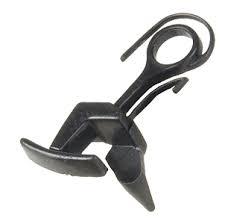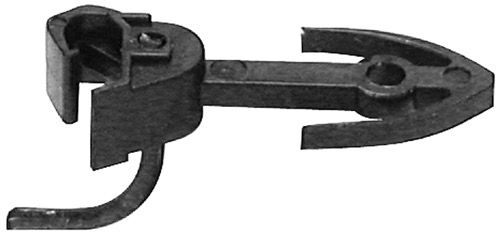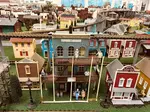 |


Building Your Model Railroad:
Tips, Techniques and Information
for All Ages and All Gauges

March - April 2022
Tracks-Issue 3-22 -- Model Railroading Newsletter
 N Scale Trestle Bridge Built by Paul Dilley, Chesapeake, Virginia
N Scale Trestle Bridge Built by Paul Dilley, Chesapeake, VirginiaScratchbuild a Trestle Bridge
Working on the Layout

One of the more back-breaking projects that we do on our layouts is crawling around underneath it to work on wiring. There are ways to do this that can make the work a little easier however. Steve Grow in Texas sent me these pictures that demonstrate his method of actually raising up one whole side of the foam-board layout surface so he can sit and work on it without having to get under it...


Another consideration is to bury your wiring in the foam-board layout surface and run most of the bus-wiring along the front of the layout which is then hidden by the removable fascia. Read more about that method here...
Lift Out Scenery
If you are like me, you want your trains weaving in and around mountains and tunnels. The only problem with that is that if you have a derailment inside the tunnel it is very difficult if not impossible to retrieve the derailed cars from inside the tunnel without tearing up your scenery. Sometimes you can reach in with a drain snake and pull out your cars, but this does not always work and runs the risk of scratching up your expensive equipment. Here was my solution to that problem which I anticipated fortunately before I finished my scenery. I built the mountain on a foam-board and purposely did not glue it down, then cut around the base of it so it could easily be lifted out. The lift out is light-weight and is easy to pick up. Once I retrieve the derailed cars, I can then replace the mountain and fix the scenery around the edges so no one can see the separation line.

Signals


Read more about signals here...
LEDs and Fiberoptics

Another resource on using fiberoptics for layout lighting is Dwarvin.com, which basically involves installing a light-source under the layout and running thin fiberoptic cables from the light-source to your buildings, streetlights, cars, etc. No wiring required!
Random Tips and Tricks
[Reprinted with permission from The Local, March-April 2022, the newsletter for the Mid-Eastern Region of the NMRA]
N Scale Coupler Conversions: One of the more difficult things to do in N scale is to replace horn hook couplers with knuckle couplers. You usually lose several pieces of the new coupler and go through two of them to get one coupler on after about an hour. Thankfully, Trainworx coupler conversion kits have come to the rescue. These are body-mounted one-piece frames each of which already contains a Micro-Trains coupler. They are very easy to install. The only problem is that they are currently only available for certain types of rail cars – the Red Caboose Ortner Rapid Discharge 5-bay hoppers, the Atlas 3 and 4-bay hoppers and the Model Power chemical tank cars. However, you can do some modifications to other types of railcars to make them fit. Be sure to check the coupler height after installation.
Paper Model Cardstock Buildings: If you are building a layout or diorama and want to put up some background buildings quickly and inexpensively, think about using cardstock covered with self- adhesive printed and/or textured paper. Here is a video by ScaleModelPlans.com showing how to construct scale model buildings made with cardstock. You can also add realistic asphalt road paper for streets.
Plumbing: Save those plastic pieces (sprues) from used building kits. You can cut and paint them and use them to make water pipes or gas lines coming out of the ground going into buildings. They also make great railings, fences, downspouts, utility poles, log or pipe loads for gondolas or flat cars, and probably lots of other things if you think about it.
Windows: Save the clear plastic covers from items you purchase and use them to make windows for your buildings. Use a thin layer of silicone gel for a diffused appearance if you wish. Paint window shades on them. Then glue them to the inside of the window frames on your structure.
Sliding Panels: Use sheets of paneling (Photo 1) that you can purchase from your local home improvement store to make sliding panels to cover up all the supplies and other things you have hidden under your layout. Use double-grooved strips of wood at the top and bottom to hold them in place. Add knobs or handles to make them easy to move.
 Photo 1: Sliding panels to hide the underside of the layout.
Photo 1: Sliding panels to hide the underside of the layout.Skyscrapers: Take multiple standard hotel-type DPM kits, glue the four walls of each kit together and then stack them on top of each other for a tower effect.
Burning Building: Cut a jagged hole in the roof of your building. Add charcoal powder to the edges of the opening. Take a cotton ball and spray paint one side gray and the other side red-orange. Then pull apart the cotton and glue pieces of it to the underside of the hole. The more stretched out the cotton is, the better it looks. Do the same thing for some of the nearby open windows. Add a flickering amber or red LED light and you’ve got a fairly good simulation of a burning building. Of course, don’t forget to add the fire truck, ladders, and firemen on the ground nearby to complete the scene. See more about fire and smoke effects here.
Realistic trees and branches: The most realistic trees, shrubs, branches, and underbrush are the dried ones you find in nature, sometimes right in your own back yard. Or you can purchase items like this from your local craft store. Sagebrush branches (Photo 2) make great tree armatures, as do branches from azalea bushes. Leave them bare for winter scenes or cover them with foliage sparingly to simulate whatever season you are modeling. Use pinecones covered with static grass for evergreens (Photo 3). Peppergrass, baby’s breath (gypsophila), dried flax and candytuft make good trees as well when bunched together (Photo 4). Add small amounts of spray paint for a variety of colors, like different shades of green or different fall colors. Add a thick layer of Walther’s Goo to the trunk of these bundles and use it to also create an array of roots at the bottom. Reindeer moss and lichen are also useful for bushes and undergrowth. Fill the open spaces at the edge of your forest with multiple branches spray painted brown or gray for added realism. Cut up some larger branches to use for fallen trees or stumps (Photo 5).
See more about modeling trees here.
 Photo 2: Sagebrush for realistic tree armature.
Photo 2: Sagebrush for realistic tree armature. Photo 3: Pinecone tree with “petals” removed and covered with static grass.
Photo 3: Pinecone tree with “petals” removed and covered with static grass.
 Photo 4: Variations of dried plants purchased from a craft store to make trees.
Photo 4: Variations of dried plants purchased from a craft store to make trees. Photo 5: Variety of lichen, foliage clumps and fallen logs (twigs from the backyard).
Photo 5: Variety of lichen, foliage clumps and fallen logs (twigs from the backyard).Lots of Tips and Techniques at Gateway NMRA:
Couplers
 Horn Hook Coupler
Horn Hook Coupler Knuckle Coupler
Knuckle CouplerCouplers can be confusing and sometimes frustrating, especially when you purchase a new locomotive and you can't wait to get home and put it on your track only to discover that none of your current rolling stock can connect to it.
Despite the myriad of different names of couplers made by different brands like Kato, Bachmann, McHenry, Accumate, and others, there are basically two kinds of couplers - horn hook and knuckle. The horn hook couplers are old and not prototypical, so most manufacturers have gotten away from putting them on their new products. They have largely been replaced by knuckle couplers which is what is installed now on new locomotives and rolling stock.
The problem is that knuckle couplers and horn hook couplers are not compatible with each other. They won't connect.
So what do we have to do to get around this problem? Get rid of all your old rolling stock? Take your nice new locomotive back for a refund? Replace all your couplers on your old railcars?
The answer is none of the above. For each train (locomotive and cars) that you want to run on your layout, you only need to replace one horn hook coupler on one of the railcars - the one that attaches to the locomotive. This is not too difficult with HO scale and larger models, but it is more difficult on N and Z scale because of the miniature sizes of these parts. For these smaller models, it's easier to replace the whole truck on one end of the rail car with a new truck that already has the knuckle coupler installed...
 Truck with knuckle coupler installed.
Truck with knuckle coupler installed.After you make this change, make sure to check the coupler height with an NMRA gauge to be sure it will connect to other equipment that has the standard height coupler installed. (You could just eyeball it if you don't have a gauge, but don't tell anybody I said that)
 Kadee Coupler Height Gauge
Kadee Coupler Height GaugeOne of the advantages of the magnetic knuckle couplers is that you can use magnetic uncouplers placed between the rails to uncouple the cars when you back them up over the uncoupler, so you don't have to do it manually.
 Kadee Magnetic Uncoupler
Kadee Magnetic UncouplerEventually, you may want to replace all your rolling stock and locomotive couplers to the knuckle couplers, so you are not limited to which cars you can connect to your locomotive. You just have to hope the manufacturers don't change the standard again after that!
More Great Videos:
How to Replace a Coupler
Cleaning and Maintaining Your Model Trains
Build a Model Structure with Interior and Lights
The San Diego Model Train Museum
Layout Tour - Modern Norfolk Southern Princeton-Deepwater Division in HO
Realistic Operations - NS - Woodchips & Papermills in HO
Upcoming Train Shows and Events
Lots of model railroad displays are always available to see anytime of the year, especially during the Holidays. If you're traveling, make sure you include a train show, museum or even a train hobby store to visit in your itinerary. The best way to find them is to enter an Internet search in your favorite search engine (like Google, or Yahoo) for "Train Shows" or "Train shows in my area", or "Train stores in my area".
Or just click here to find train shows in your area...
Or go directly to the Trainshow.com website!
This is sure to be great fun for the entire family!
Your Personal Online Train Store
If we don't have it we'll find it for you!
Great Prices! Great Service!
I hope you enjoyed this issue of Tracks. Feel free to pass it on to your friends, family and other model railroaders. If you have a great tip or article that you would like to publish on the website, please let me know - The more, the better. Any comments or suggestions are always welcome. You can either go to the Comments/Contact Page and enter your suggestions there or contact me directly at gjwarth@bymrr.net.
Thank you for your support and for subscribing to the free newsletter for Building Your Model Railroad.
And, as always, thank you for visiting the BYMRR website at
https://www.bymrr.com. We are committed to providing all the newest techniques, tips and articles to help YOU build your own great model railroad!
Take care and be safe.
Greg Warth
Survey
Tell us what you think...
We truly appreciate all the informative comments we receive from this survey. Your input greatly influences how this site is managed.
Back to Home Page
Contact Me | Blog | Photos | References | Supplies | GiftShop | Sitemap | Search | Comment | Privacy Statement | Disclosures
Tracks Newsletter: Sign Up Here!
√ = ad or sponsored link
What's New on BYMRR.com?
Recent Articles
-
Model Railroad Supplies
Dec 16, 25 03:46 PM
We have started a new store to help you build your layout and teach your youngsters about science with STEM products. -
DC and/or DCC on the Same Layout
Mar 09, 25 10:46 AM
How to wire your layout for either DC and/or DCC operation. -
Looking for a locomotive speaker
Nov 24, 24 07:29 AM
First Name: Randy E-Mail Address: bymrr@building-your-model-railroad.com Enter your question: : I am looking for a speaker for a Walthers EMD SD70ACE Locomotive, product number 910-9866. The control b…







